![A Writer’s View of the Storytelling Festival]()
by Kim McCloskey | Mar 22, 2018 | About Storytelling

When I first heard about storytelling, I assumed it was all just glorified children’s stories. But the art of storytelling is so much deeper than that. Tellers weave tales of both fact and fiction, serious and humorous. These stories delve into the depths of the tellers themselves, all the while resonating with the listeners. There’s a certain magic to storytelling, something you need to experience to understand more completely.
I’m fortunate enough to live not 30 minutes away from the Timpanogos Storytelling Festival. Tellers from all over the country—as well as from across the pond—come to Utah Valley for a weekend of telling stories, bringing their magic to capture the imagination and hearts of all in attendance. The Timpanogos Storytelling Festival held at Thanksgiving Point in Lehi, Utah is now something of a tradition for me. I’ve been going for four or five years now (can’t remember when I actually started attending…), and it seems like every year gets better and better.
Storytellers such as Donald Davis, Bil Lepp, and Carmon Deedy come and weave stories that leave my abs hurting from laughing so hard, and may even promote a welling of other emotions. These tellers are masters at the craft, and while swapping stories around Christmas dinner is one thing, these good folks elevate it to a whole new level.

During previous visits to the festival, I had gone with the intent to listen, laugh, feel, and enjoy. In 2017, however, I decided I needed to up my game. As a writer, I’m constantly looking for examples of exemplary storytelling. What makes a story funny? What makes it engaging? How do I hook my readers? I’d like to share with you some of the things I learned about storytelling from the Timpanogos Storytelling Festival 2017. This can apply to writing, or any form of storytelling.
There is No “Right” Way
Each storyteller spun his or her stories in such a different way that it’s nearly impossible to compare them to the others. Bil Lepp has me rolling on the floor laughing every time, whereas Donald Davis, while funny, leaves things open for heartwarming tales that leave tears running down the cheeks of many.
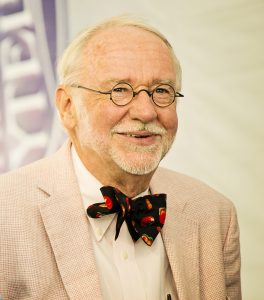
When it comes to telling your own stories, whether that’s in novel form, oral form, or whatever medium you choose to use, don’t feel like you have to imitate a particular author, teller, or artist. You have your own voice, your own experiences, and your own personality, and those things right there are what make your stories yours. Of course, if you’re just starting off, you may still need to discover what your voice is, and that’s OK. Write, tell, and create stories as often as you can, and don’t be afraid to let you slip out into your works. I love Bil Lepp, and I love Donald Davis. Both tell funny stories as well as more serious ones, but there’s a reason I like both separately. Each of those tellers has something new and unique to offer me that the other one doesn’t. The same goes with you; what you have to offer is new and unique and can’t be found anywhere else. And we want to hear all about it.
Tell Truths
When telling stories, you don’t have to give all the facts, but you do need to tell the truth. That important ditty of information came from one of the tellers herself (Shonaleigh, I believe) in regards to telling personal stories. I think the same thing applies to our fiction. Not all of the facts are necessary to make a good story, but weaving falsehoods into your story can make it seem less legitimate and authentic.
So what is truth if the facts aren’t all there? Consider personal stories. You may not (and probably never will) remember what your friend said verbatim when you were twelve years old (unless you’re twelve years old now and your friend just said it this afternoon…). But when you repeat a story or a phrase that person said, you’ll tell it as if your friend had said exactly that. So why do we believe it if it’s most likely not 100% accurate? It’s because the way you said it was something they could have said.
My best friend in high school would never have said, “That movie spoke to my soul like the wind blowing through the leaves on a crisp autumn day.” Instead, he would say something along the lines of, “Dude, that movie was awesome!”
See the difference? The same thing applies to your fictional characters. They have a voice, and having them do or say something that would be completely out of character for them will hurt the accuracy and believability you’re trying to instill in your readers. Know who your characters are, and most importantly, don’t betray who they are.
Do Your Homework
The perpetuation of inaccurate information is common among stories told by word of mouth, and any other storytelling platform for that matter. This could include people continually mispronouncing your last name, or even more dangerous, spreading falsehoods about people of other beliefs, cultures, and the like.
You can tell stories about people and cultures you don’t identify with. That’s fine. The problem arises when we as storytellers fail to do our research and perpetuate some primitive believe that holds no truth whatsoever. When in doubt, tap someone from the culture or country in question. They will appreciate it a lot more if you talk to them for help before your novel goes to print, rather than having your book printed with those falsehoods.
Keep your stories rich, but don’t keep it in the shadows of what it could be simply because you’re afraid of getting something wrong. Find someone who is from the Philippines if your character is from there or visiting. Use online discussion boards from the people you wish to research. Reach out to others for help, and it will bolster your story in tremendous ways.
We are All Storytellers
Storytelling is the heart of what we do as writers. We spend countless hours finding the best words for a sentence or a perfect setting for a scene. While all these are important aspects of writing and storytelling, don’t forget the other—seemingly smaller—parts of storytelling that can make or break your work.
I can’t recommend enough these professional storytellers who I’ve been fortunate enough to hear for years now. They are master storytellers, and there is so much we can learn from them; things about life, humanity, and yes, even writing fiction.

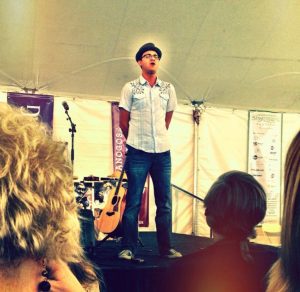
by Courtney Burns | Sep 3, 2017 | About Storytelling
 From his Appalachian Mountain accent to his incredible talents on pretty much all the instruments, Josh Goforth is one of those storytellers you really need to hear in order to believe. With stories filled with the most original characters alive (he swears they all exist) and songs that will have you clapping and singing along, you can’t help be enchanted and transported to his boyhood upbringing in the Appalachian Mountains.
From his Appalachian Mountain accent to his incredible talents on pretty much all the instruments, Josh Goforth is one of those storytellers you really need to hear in order to believe. With stories filled with the most original characters alive (he swears they all exist) and songs that will have you clapping and singing along, you can’t help be enchanted and transported to his boyhood upbringing in the Appalachian Mountains.
1. What is the first story you remember hearing and/or the first story you remember telling?
I remember the ghost stories my grandmother told. Her accent was slow and haunting and as a kid, it scared me to death. But I’m thankful now to have heard those stories. The suspense she created taught me quite a bit about pacing. It’s hard to pick a first one, people in my community were constantly telling stories.
2. How was the seed of storytelling planted in your life?
Storytelling was a way of life where I grew up. I remember sitting for hours in the evening and hearing family stories from my grandparents. There were so many interesting characters in the community that the stories seemed endless.
3. Where does storytelling grow from here? How do you want see storytelling influencing society?
Storytelling has much to teach all of us. In a world of quick media and instant entertainment, our stories show us the beauty of a slow unfolding and help us reach a deeper understanding of our emotions and our shared humanity.
4.If you needed to start a dance party, what song would you lead with?
Tough call, the song in my head right now is signed sealed delivered…Stevie Wonder. I know, you thought it was gonna be some fiddle tune. Haha
Don’t miss Josh during the festival. Find his schedule and information about the festival at https://timpfest.org/events/28th-annual-timpanogos-storytelling-festival/
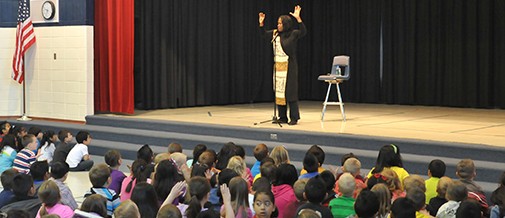
by Courtney Burns | Sep 1, 2017 | About Storytelling, Festival
One of Timpanogos’ favorite storytellers, Charlotte Blake Alston has a wonderful way of weaving stories that allow listeners of all ages to see themselves and the world around them in new and vital ways. With wisdom, wit, and frequently music, Charlotte’s stories are guaranteed to enchant and entertain.
- What is the first story you remember hearing and/or the first story you remember telling?
What sticks in my memory is the voice of Miss Alexander (later, Mrs. Mitchell) my 2nd grade teacher reading Br’er Rabbit stories. She would tell us, “If you get all your work done, I’ll read you a story.” We got aaalll our work done fast! She had a big oversized book of tales. She would pull out her teacher’s chair, open that big book and transport us to the world of Br’er Rabbit, Br’er Bear, Br’er Fox, Sis’ Coon and the crew. The first oral presentation I gave as a 6 year-old was a poem by African American poet, Paul Laurence Dunbar and a comedic monologue my father wrote for me to learn and deliver. Later, as an adult – teaching kindergarten at the time – the first story I told was the Ashanti story Who’s in Rabbit’s House. My students presented it as a skit in an assembly program.
- How was the seed of storytelling planted in your life?
The seed of storytelling was planted by my Dad. My mother was a musician. She was the organist – pipe organ – at our church. She accompanied choirs, soloists, played for funerals, weddings and social events in the community. My dad had NO musical talent but was gifted with words. As a child, I would sit quietly near him when he was trying to find time to write in a private space away from his 5 kids! I loved being around my dad. Eventually he began reading out loud to me some of what he was reading or writing. Then he gave me the complete poems of Paul Laurence Dunbar and selected poems for me to read. I read them over and over and quickly memorized several. I think when he saw how good my memory was, a light bulb went on in his head and he started writing monologues for me to learn and ‘recite’ as well. Much later, as an adult and while I was still a classroom teacher, I learned of a newly formed storytelling guild in Philadelphia. Patchwork was formed in the late 70’s. I went to a storytelling event they sponsored. I heard the first storyteller and my heart was Home!
- Where does storytelling grow from here? How do you want see storytelling influencing society?
I believe storytelling allows us to see each other – not as Democrat, Republican, Protestant, Baha’i,’ethnic minorities’ or ‘ethnic majorities – but as people; fellow humans all on the same planet, on the same human journey with far more common human experience than uncommon. Storytelling allows you to see a reflection of yourself, of your humanity – through the stories we share. Stories are manifestations of the compilation of human experience throughout our existence on the planet. Embodied within them are distillations of the range of human experience and wisdom gained through the ages – wisdom that still speaks to us today. Despite the all-pervading presence of digital communication devices, I believe as long as human beings exist and can speak, they will tell stories – whether it is the five-year-old at the dinner table sharing her school day, the minister bringing to life a sacred teaching, a patient educating a physician through her personal health narrative, the family elder recounting family history and genealogy at a family reunion, or the lawyer advocating for his client, storytelling with always be with us and will always serve as a medium for substantive and meaningful reflection. It is my hope that the gathering together of ‘the village’ to hear and share OUR human stories will continue in both formal and informal ways in communities across the country.
- If you needed to start a dance party, what song would you lead with?
I’m a child of the sixties so the first song that comes to mind from my house party days is Heatwave by Martha and the Vandellas. It still gets my friends and me on our feet for a bit of a Twist dance revival! Also, almost anything by the ‘Godfather of Soul’ – James Brown! Otherwise, just about anything from Motown artists” The Four Tops, The Temptations, Diana Ross and The Supremes, Junior Walker and the All Stars… Let’s Party!!
Be sure to catch Charlotte Blake Alston during this year’s Festival. For more information visit https://timpfest.org/events/28th-annual-timpanogos-storytelling-festival.
Charlotte closes her emails with these powerful words that we thought would be an appropriate ending here as well: Words have power – use them thoughtfully.

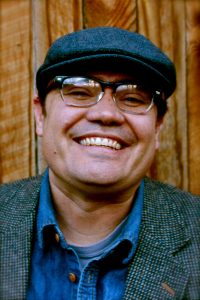
by Courtney Burns | Aug 29, 2017 | About Storytelling, Timpanogos
 Sam Payne, hailing from right here in Utah, is a stellar teller of stories and songs. Each time I hear him I am impressed with his skill and abilities. A writer, teller, teacher, and radio personality we are happy to have him with us at the festival again this year to share his unique performances with us.
Sam Payne, hailing from right here in Utah, is a stellar teller of stories and songs. Each time I hear him I am impressed with his skill and abilities. A writer, teller, teacher, and radio personality we are happy to have him with us at the festival again this year to share his unique performances with us.
1. What is the first story you remember hearing and/or the first story you remember telling?
The first story I remember hearing was Danny Kaye’s musical version of “The Ugly Duckling” from the soundtrack to the movie musical Hans Christian Andersen. I must have listened to it a thousand times. When I was six, in the middle of a bout of stage fright over serving as the ring bearer at my aunt’s wedding, my mom put her hands on my shoulders in the church cloakroom and said I’d be fine as long as I remembered to walk down the aisle like the swan at the end of the Ugly Duckling story I loved, “…with his head so noble and high.” I survived my gig as the ring bearer. That may be when I learned what good medicine stories can be.
The first story I remember telling was an original crime noir piece about a big-city gumshoe on the trail of an international criminal named Bordeaux. I wrote it when I was eight or nine. My mom brought home an old thrift-store typewriter for us bored kids to take apart one summer afternoon. Instead I began a novel. I got through two-and-a-half typewritten pages before I conked out. Some people carry good-luck charms of one kind or another. I carry those two-and-a-half typewritten pages. If you see me with my shoulder bag, ask me. They’re in there.
2. How was the seed of storytelling planted in your life?
My folks shipped my brother and me off to my grandparents’ house in the Bay Area for three weeks one summer when we were small. Every night of that visit, after my grandmother tucked us into bed, my grandfather sat in a chair and read to us from The Adventures of Huckleberry Finn. I love my grandfather, but he’s a crotchety, disapproving, dictatorial old Greek, and there was an enormous gulf between him and us kids. The nightly reading of Huckleberry Finn drew us out in love for one another. Later, when I was in high school, he mailed me a VHS copy of Igor Stravinski’s strange and wonderful work “The Soldier’s Tale,” animated by R. O. Blechman, and it happened again. I think it was through those rare exchanges with my grandfather that I learned how stories can help people find their way to each other.
3. Where does storytelling grow from here? How do you want to see storytelling influencing society?
Fueled by the incredible experiences that people continue to have at festivals like Timpanogos, people are going home and inviting loved ones together to share stories in smaller, more intimate spaces. It’s the era of coffee house storytelling shows and living-room storytelling parties. It’s an era in which prisons and hospitals and churches and at-risk youth programs are trusting storytelling to do the heavy lifting in their incredibly important work. There’s a phrase I like to use: “Never be afraid to think small.” It comes from observing the career of my father, a folksinger who, in the early 1970’s, made record albums of his own music and sold them from door to door. While other artists were working on opportunities to play stadiums, my dad hung on for years to an artistic lifestyle that allowed him to look into the eyes of just about everyone who heard a song or bought an album. What a wonderful thing it is that the storytelling revival of the last half-century has built the kind of bonfire from which people are carrying away embers and lighting fires of their own, across which they can look into the very eyes of the people who are listening.
4. If you needed to start a dance party, what song would you lead with?
Oh my. Much to my chagrin I’m the guy who, just when people are hankering for “Dancing Queen,” suggests “Grapefruit Moon” by Tom Waits. I don’t get invited to a lot of dance parties. Maybe “Magdalena” by Brandon Flowers. I’m listening to it right now. That song just kills me.
Don’t miss out on seeing Sam at this year’s Festival. For more information about Sam’s schedule and the Festival, visit: https://timpfest.org/events/28th-annual-timpanogos-storytelling-festival.
by Courtney Burns | Aug 25, 2017 | About Storytelling
Catherine Conant grew up in a large Italian family in New Jersey where she learned to stitch together the things of family and of imagination to create powerful and beautiful stories about the world around her. Funny and poignant, you are sure to fall in love with Catherine!
1. What is the first story you remember hearing and/or the first story you remember telling?
The first story I told was one I found when I moved to a new town. I asked longtime residents what were their favorite stories about the place where they lived. The one they loved best was about a man who lived many years ago. His name was Bill Baker and he had teams of oxen. People hired him to plow farms and haul freight as well as any other odd job. (They even had a postcard of him standing with his team!) This is a favorite because it introduced me to the history of my town.
2. How was the seed of storytelling planted in your life?
I had had many different occupations but was still searching for the one I felt spoke to my heart. Twenty-five years ago, I attended a Connecticut Storytelling Festival in New London, Connecticut, and witnessed a storyteller captivate an audience as she told an African folktale. I suddenly realized I had found what I had been searching for and never looked back.
3. Where does storytelling grow from here? How do you want to see storytelling influencing society?
Much of my current work is helping groups and organizations become acquainted with the idea of using stories to create stronger and more vibrant neighborhoods and communities. It is exciting to watch people embrace the use of stories to instill understanding, connection and shared vision. I believe it is the most effective way to support the meaningful change we need and want. Stories that help us understand our past are essential for shaping our future. Stories tell us who we are.
4. If you needed to start a dance party, what song would you lead with?
Hey You (I Love You) Michael Franti and Spearhead
Don’t miss out on seeing Catherine at this year’s Festival. For more information about Sam’s schedule and the Festival, visit: https://timpfest.org/events/28th-annual-timpanogos-storytelling-festival.
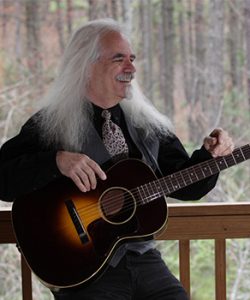
by Courtney Burns | Aug 23, 2017 | About Storytelling
 We are excited to welcome Michael Reno Harrell to the festival for the first time this year! Coming from the Southern Appalachian Mountains his stories and songs have been described best as “like a breakfast of butter and molasses on a warm biscuit… Southern, easy and sweet.” He was so kind to answer a few questions for us to help us get to know him a bit better prior to his debut at the festival.
We are excited to welcome Michael Reno Harrell to the festival for the first time this year! Coming from the Southern Appalachian Mountains his stories and songs have been described best as “like a breakfast of butter and molasses on a warm biscuit… Southern, easy and sweet.” He was so kind to answer a few questions for us to help us get to know him a bit better prior to his debut at the festival.
- What is the first story you remember hearing and/or the first story you remember telling?
The first time that I told a real story, that is, not just an anecdote or a joke was on stage. I had a band and we were working a club in the mountains of Western North Carolina, my ancestral homeland. I had written a song about my grandfather and wanted to tell the audience about the person who had inspired the song. So, in the middle of a music show I told a story about my grandfather and me. All conversation stopped and the late-night revelers sat quietly and listened for what was probably a twelve-minute piece. In that one moment, I realized the power of story.
- How was the seed of storytelling planted in your life?
The first time that I became aware that storytelling was not only a thing, but was something that one could actually do as an accepted way of performance was around 2003. I was on tour playing gigs across Texas. I walked into my hotel room around 2:00 AM and turned on the TV to unwind a bit after the show. I found the local PBS station and was immediately captivated by a little southern woman talking about taking piano lessons as a small girl in someplace called Thomasville, Alabama. It was the great Kathryn Tucker Windham. I was hooked.
- Where does storytelling grow from here? How do you want see storytelling influencing society?
I was on a tour doing concerts across Michigan, Illinois and Wisconsin and had a Monday night off. My wife called and asked if I would be interested in doing a ten-minute story at a weekly gathering in Chicago. I said that I would like that. There were to be four other tellers also on the bill. The urban audience of perhaps a hundred and thirty was around seventy percent female and the average age was somewhere around twenty-two. I am not urban and was sixty-five years old at the time. After the show, about thirty of them gathered around and asked questions about my performance. I told them that I told stories for a living and they were amazed to find that such a job description existed. Whether or not this phenomenon that has become what we refer to as professional storytelling and the festivals that present it survive, storytelling will be just fine. It just may not be shared in a tent with lots of folks sitting in folding chairs. But, storytelling on any level draws us closer.
- If you needed to start a dance party, what song would you lead with?
Since I’m no kind of dancer or a DJ, I would have to be in the band. And since I grew up playing bluegrass, folk and country, it would have to be a song that presented an opportunity for a good deal of stomping.
Make sure to check out Michael at this year’s Festival. For more information on Michael’s schedule and the Festival, visit: https://timpfest.org/events/28th-annual-timpanogos-storytelling-festival.







